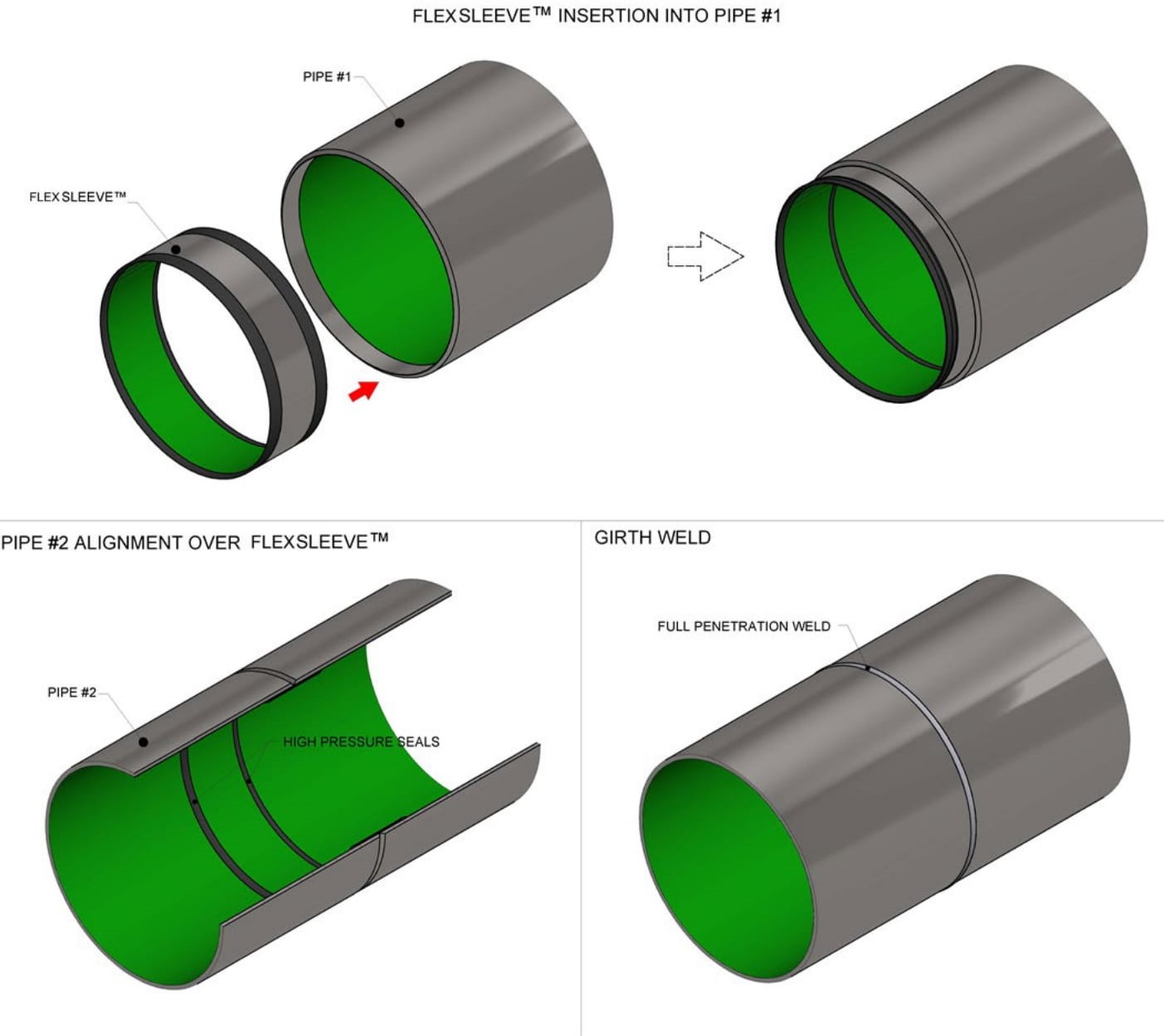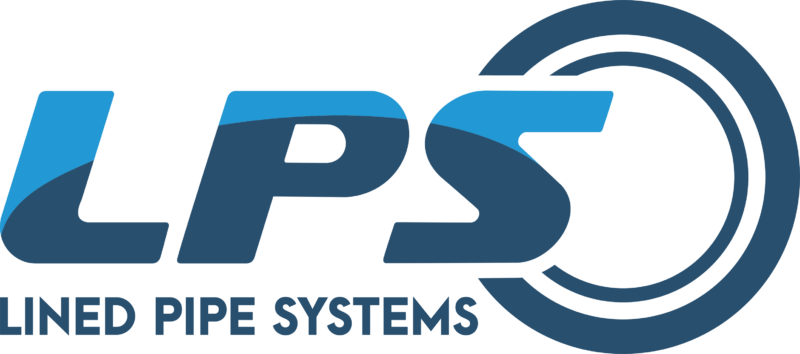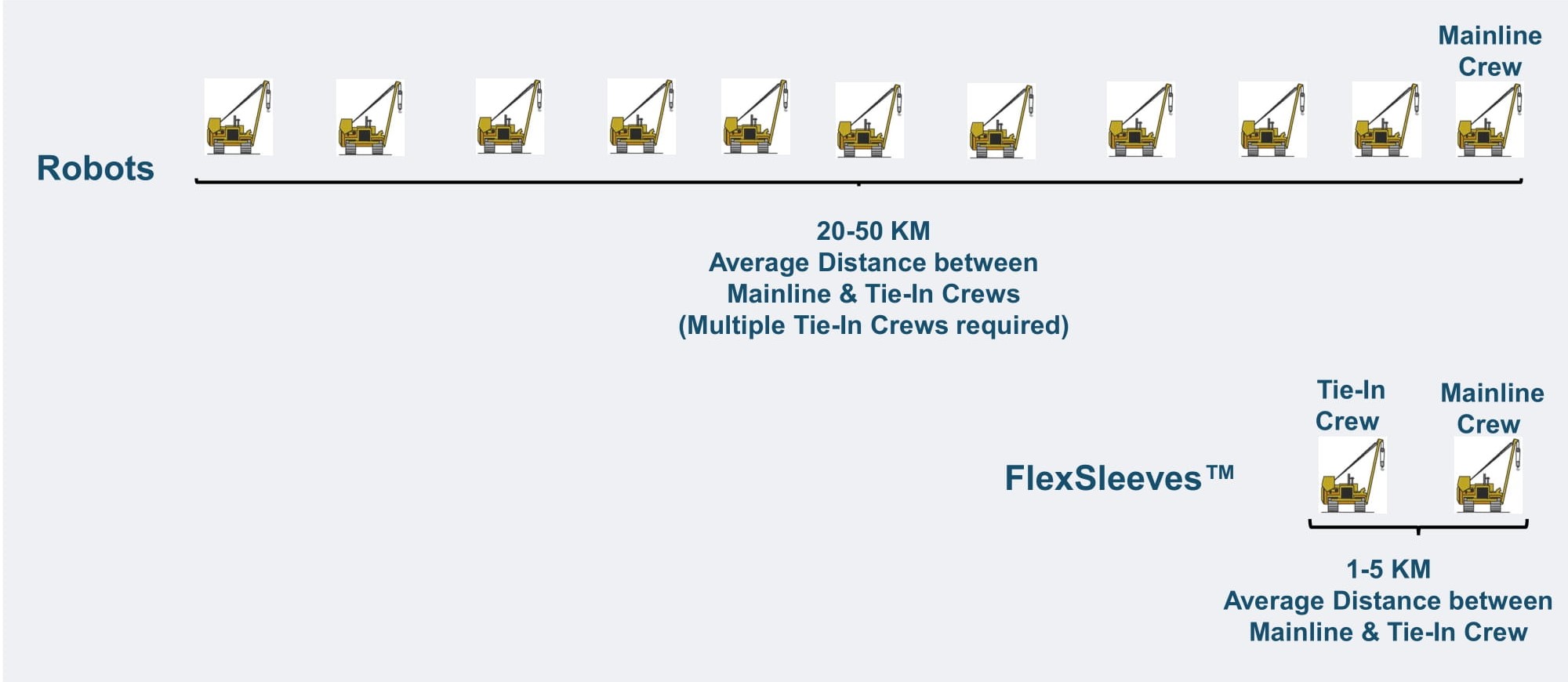Pipelines transporting corrosive liquids require an internal lining to prevent corrosion that would shorten the life of the pipeline.
Long distance and high-pressure pipelines generally require welded joints.
The question is: how to protect the interior steel of the weld zone from corrosion when the weld arc would destroy a corrosion-resistant polymer at this location.
The FlexSleeve® Solution
FlexSleeves inserted into pipe ends protect the weld zone from corrosion






